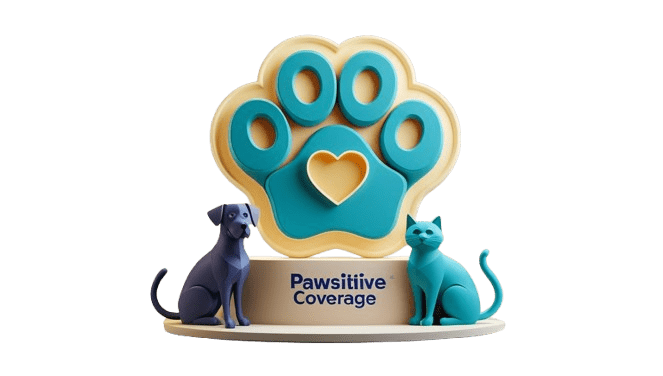Hey there, I’m Michael Brooks, and if you’ve ever felt a pang of worry when your pet growls or hisses, you’re not alone. My rescue dog, Luna, taught me plenty about love—and a bit about chaos. Her $3,000 vet bill from a squirrel-chasing mishap was my wake-up call to get serious about pet care, sparking Pawsitive Coverage. We’re not insurers, but we’re all about helping U.S. pet parents like you with clear, heartfelt advice. One challenge I’ve faced with Luna? Her occasional grumpiness at the dog park. It got me diving into pet aggression tips, and today, I’m sharing what I’ve learned to help your dog or cat live happier and safer. Let’s weave Luna’s story with practical steps to tackle aggression, plus a nod to how insurance can ease the costs of behavior-related mishaps.
Understanding Pet Aggression
When Luna first snarled at a pushy pup, I froze. Was my sweet girl turning mean? Turns out, aggression isn’t about “bad” pets—it’s often fear, pain, or instinct kicking in. About 20% of U.S. dogs show aggressive behaviors like growling or biting, while cats might hiss or swat. For Luna, it was protecting her space. Understanding why your pet acts out is step one. Is it strangers, other animals, or maybe a sore paw? I took Luna to the vet to rule out health issues—costly, but worth it. Insurance can cover those visits, often at 70-90% reimbursement. Want to know more? Our pet insurance guide breaks it down.
Common Triggers and What They Mean
Let’s get into the nitty-gritty of what sets pets off. With Luna, I noticed patterns:
- Territorial Vibes: She’d bark like crazy when dogs got too close to her favorite bench. Cats do this too—ever seen one guard their windowsill?
- Fear-Based Reactions: Loud noises made Luna lunge. For cats, a new person might trigger a hiss.
- Resource Guarding: Luna once snapped over her bone. It’s instinct, but manageable.
- Pain or Illness: A hidden injury can make any pet cranky. My friend’s cat lashed out until a tooth issue was fixed.
![Pawsitive Coverage pet aggression tips with owner tracking behavior.]](https://pawsitivecoverage.com/wp-content/uploads/2025/04/9682fad5-6101-4ef9-a0a7-8e36fd635e09-1024x581.jpeg)
Pinpointing triggers takes patience—like decoding a dog park chat. I started journaling Luna’s outbursts, which helped me spot trends. If your pet’s acting up, our pet health post has tips on spotting health issues early.
Training Techniques to Ease Aggression
Training Luna wasn’t a walk in the park (pun intended), but these pet aggression tips worked wonders:
- Positive Reinforcement: I reward Luna with treats when she stays calm around other dogs. Cats respond to praise or toys—my neighbor’s tabby loves a feather wand.
- Desensitization: Slowly exposing Luna to triggers (like bikes) at a distance helped her chill. Start small—think baby steps.
- Counter-Conditioning: Pair scary things with good stuff. Luna now associates strangers with cheese. Magic!
- Clear Commands: “Sit” or “leave it” gives Luna focus. Cats? Train them to redirect energy to a scratching post.
I messed up early on—yelling at Luna only made her edgier. A trainer set me straight, and now we’re a team. Professional help isn’t cheap ($50-$150/session), but insurance can cover behavior consults. Our pet finances post shares budgeting hacks for training costs.
When to Call in the Pros
Sometimes, you need backup. Luna’s growling didn’t stop with treats alone, so I called a behaviorist. Signs it’s time for help:
- Persistent Aggression: If your pet’s still snapping after weeks of trying.
- Safety Risks: Bites or scratches mean it’s serious. Luna nipped once—my cue to act.
- Your Stress: I was frazzled, which didn’t help Luna. Pros bring calm.

Behaviorists dig deep—Luna’s issue was partly anxiety from her rescue days. Sessions cost $200, but her progress was priceless. Some plans cover therapy, saving 80% or more. Curious? Check our insurance tips.
Preventing Aggression Before It Starts
An ounce of prevention beats a pound of vet bills. Here’s what keeps Luna steady:
- Socialization: Early playdates helped her vibe with others. Cats need safe intros too.
- Routine: Luna thrives on predictable walks and meals. Chaos stresses pets out.
- Exercise: A tired dog is a happy dog—Luna’s zoomies burn off tension. Cats need playtime—think laser pointers.
- Health Checks: Pain fuels aggression. Luna’s annual exam ($150) catches issues early.
Prevention saved me headaches—and money. Aggression-related incidents can cost $1,000+ if injuries happen. Insurance softens the blow, but training’s the real hero.
Join Luna’s Chill Crew!
Luna’s come a long way from her grumpy days, and I’m betting your pet can too. Got pet aggression tips or a training win to share? Download our free Aggression Checklist by emailing hello@pawsitivecoverage.com or visiting our Get in Touch page. It’s packed with triggers to watch and steps to try—perfect for busy pet parents. Share your story, and we might feature it in our Pet Stories! Questions about costs or insurance? We’re here to guide—reach out within 24-48 hours. At Pawsitive Coverage, Luna’s lessons light the way to calmer, happier pets.

